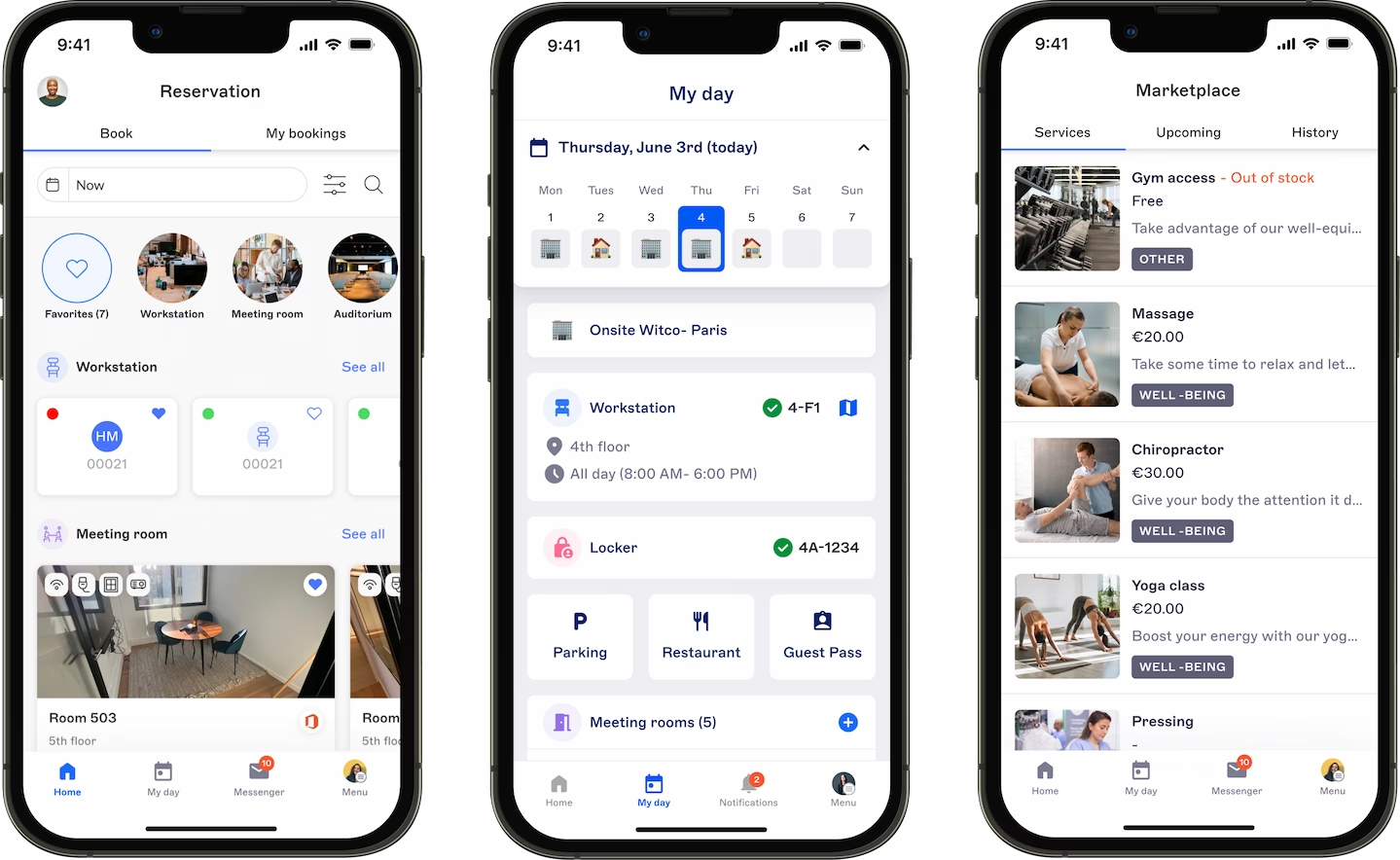Digitalization of commercial buildings: the essentials in 2025

The intense competition on the office real estate market compels property owners and managers to rethink their strategies to optimize space utilization. In 2025, the digitalization of commercial buildings is no longer an option, but a strategic necessity to maintain office space profitability as well as their attractiveness to tenants and their employees. Digital transformation is the key driver of this evolution, enabling the transformation of buildings into smarter, more efficient, and more attractive spaces.
The rise of smart buildings has been driven by changes in work patterns. Initially attracted by the prospects of reducing their real estate footprint through hybrid work and shared offices, some companies are now tightening their remote work policies to support team cohesion and productivity. As office attendance resumes with a trend toward 3 days out of 5 worked on-site, managers seeking space optimization rely on tools that enable real-time usage measurement, efficient hybrid work organization, and prompt adaptation of premises to employee needs.
Here are 3 essentials for an office building that stands out from other commercial buildings occupied by large enterprises:
1. Smart comfort and predictive security
Beyond the fundamental expectation of a clean and functional workplace, employees seek adaptive and intelligent spaces. Digital building management now empowers businesses to offer:
- Proactive services through IoT (Internet of Things) and smart sensors that anticipate needs (temperature, lighting, air quality),
- Omnichannel support to report incidents via AI chatbots, interactive screens, or mobile applications,
- Real-time resolution tracking with geolocation and push notifications on progress,
- Instant wellness data: noise measurement, luminosity, crowded area monitoring.
Ensuring the availability and accessibility of quality daily services is paramount to the success of the digital work environment created within your commercial building.
2. Clear and centralized service offering
Common space reservations, gym, corporate restaurant, concierge services... Many services are now available within commercial buildings. However, effective digital property management primarily means avoiding service fragmentation across multiple sites and applications. Today's digital commercial buildings offer a number of noteworthy features, including:
- An "all-in-one" application integrating services such as workspace bookings, catering, fitness, concierge, wellness, etc.,
- Personalized recommendations based on AI and each user's habits,
- Mobility services (shared bikes, electric charging stations, carpooling),
- Partnerships with foodtech companies to ensure a diversified and sustainable food service offering,
- Bookable modular spaces according to specific needs (collaboration, concentration, creativity).
For users, the process is straightforward: a single download and password is required to gain access to the entire range of services available in their smart building.

3. Community building and immersive experiences enhanced by commercial building digitalization
Office building occupants are part of the same community. Unfortunately, it's not always easy for them to connect, online or offline, especially since they belong to different companies. One of the pillars of a successful digital experience is offering occupants a true communication hub.
Directory, internal messaging, news feed and site events: the digital pathway is also a meeting facilitator. This "social" component, popularized by Facebook and others, is now one of the most used channels. Employee relationships can be strengthened by applications dedicated to the occupant experience, such as Witco.
Towards augmented building-as-a-Service
Companies evaluate their offices according to employee engagement and satisfaction KPIs. Further to a building digital transformation, key metrics can be monitored to measure its performance through:
- Predictive analysis of flows and space needs,
- Digital twins of buildings to optimize energy performance,
- Integrated ESG dashboards to measure environmental impact,
- Adaptive pricing of spaces according to real-time demand.
For owners and property managers, the challenge now is twofold: to design smart commercial buildings that are truly "as-a-Service," offering users a premium experience, while optimizing property operations. This digital transformation of commercial buildings is a key factor in attracting and retaining tenant companies as the market becomes more competitive.





